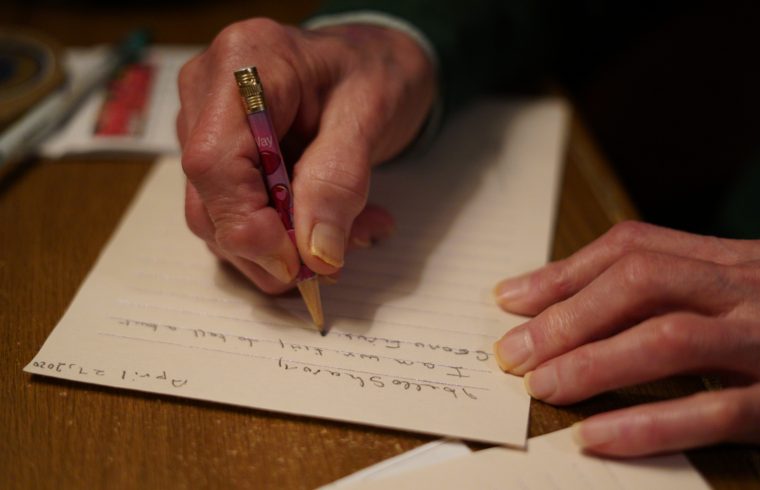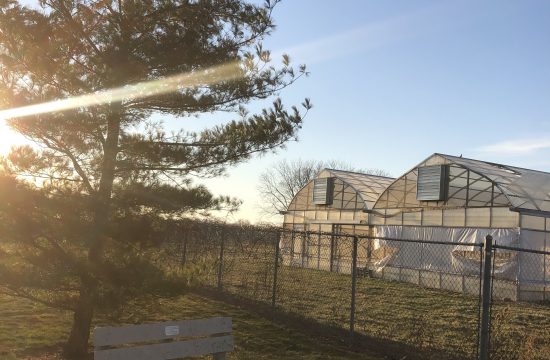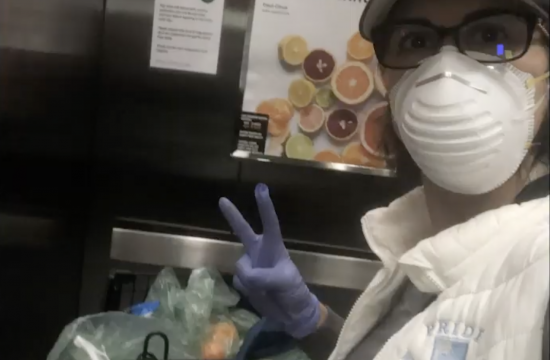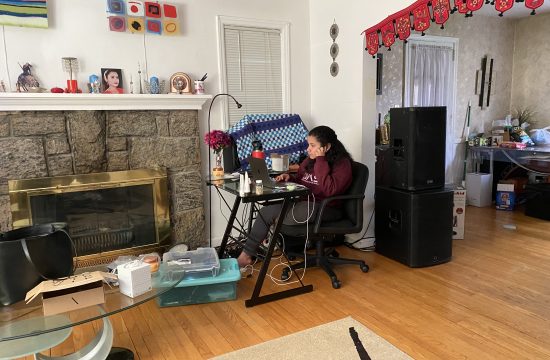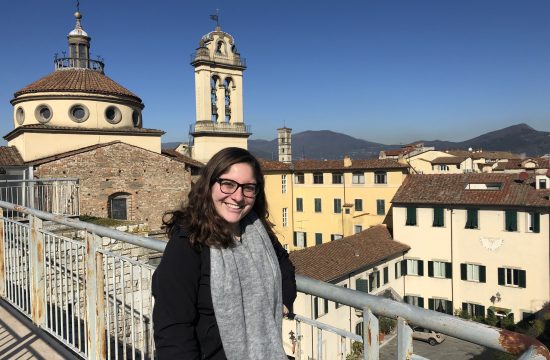By Britney Strong
There have been many pandemics throughout history, but one of the most deadly was the 1918 Spanish Influenza. At its worst, the flu infected over 500 million people and over 50 million of them died. At the time, there were no flu vaccines or antibiotics to help with secondary bacterial infections. To control the flu they had to rely on resources other than medicine to prevent the spread. Some of these methods included isolation, quarantine, and prohibiting public gatherings. While there are several similarities to how the public handled the 1918 flu and the coronavirus today, it is known that both of the illnesses themselves are vastly different. It is no doubt that because of the coronavirus everyone’s lives are changing, but this is not the first time something like this has happened.
While being home from college I have been taking time looking through old family albums dating back to the 1800s. While looking through the pages I came across some letters addressed to my great great grandfather, Niel Tice.
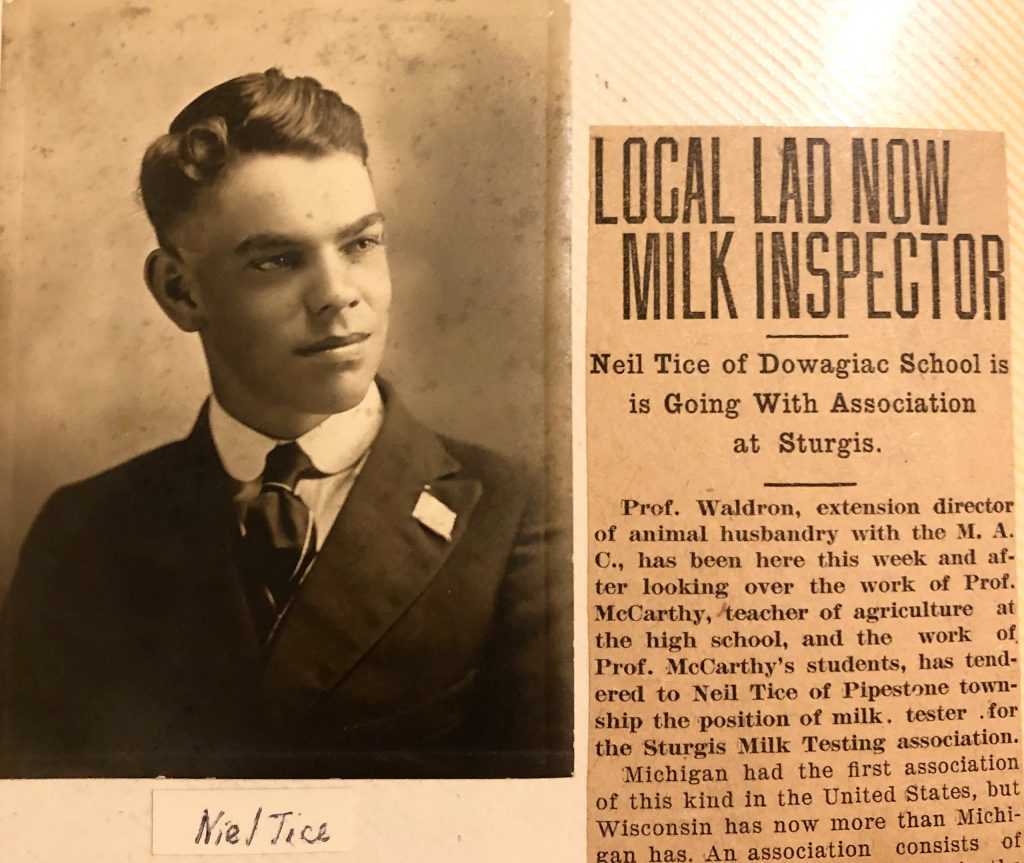
In 1918 Tice graduated high school and began working for a co-op as a milk tester that summer in preparation for college. In July his father suddenly passed away, resulting in Tice having to move back home to run the family farm. After he left the co-op, the Bowens who owned the farm, began writing him letters. They urged him to come visit, updated him about life there, and often complained about his replacement. One letter written to Tice, dated October 27th, 1918, took me by surprise due to our current COVID-19 circumstances. The letter addressed how the influenza had impacted their community and the similarities we are experiencing now are astonishing.
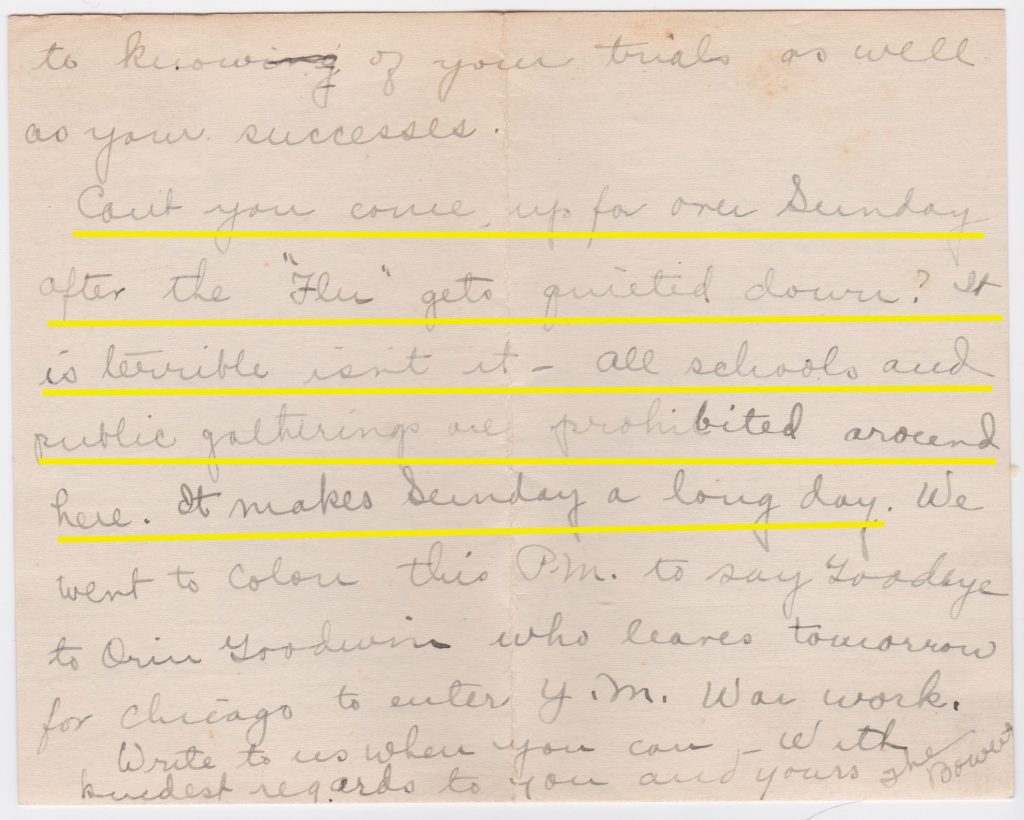
The second letter is from January 10th, 1919. The Bowens talk a little more about life there and what the fall and winter months were like during the pandemic. Mrs. Bowen then goes on to talk about members of the community who had gotten the flu and were trying to overcome it.
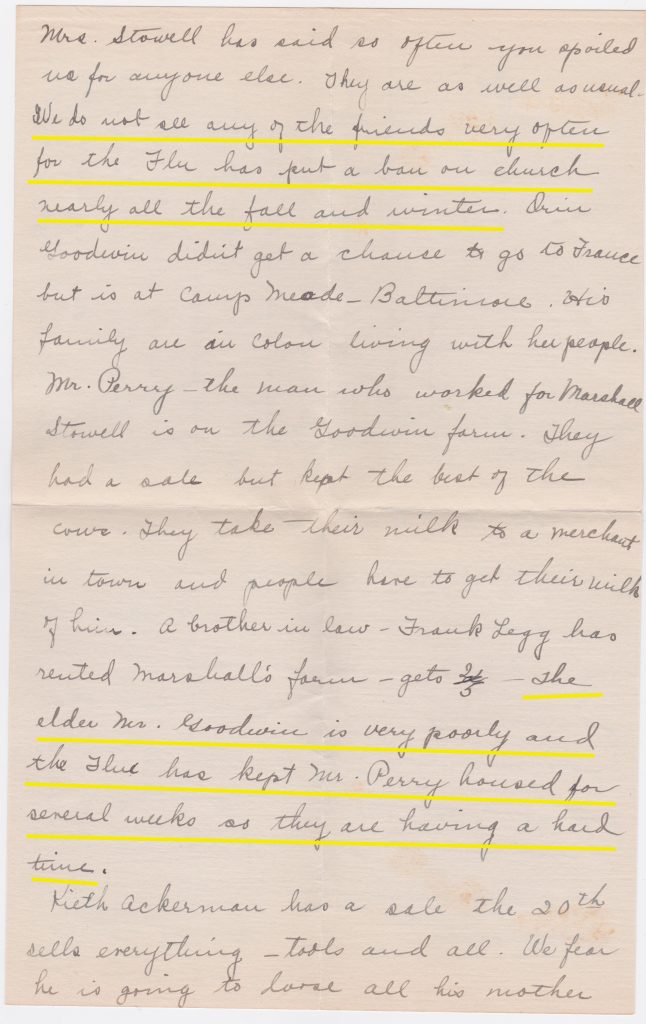
“The elder Mr. Goodwin is very poorly and the Flu has kept Mr. Perry housed for several weeks as they are having a hard time”
Reading these letters it is easy to draw parallels to the coronavirus today. Schools closing, gatherings being prohibited, and life changing as we know it. In 1918 the main method of communication was writing letters. In 2020 we use cell phones, social media, and Zoom calls to get in contact with friends, family, and coworkers. With that being said, the message of writing and sending letters is not lost to all.
My grandfather Barry Walcott is 80 years old living with progressed dementia. Individuals with dementia often become fixated on things and do best with set routines. Since coming home from college, I’ve been spending more time with him and my grandma since both of them live with my parents and sister. Due to their age and health conditions, they are both quarantined downstairs in the safety of my house.
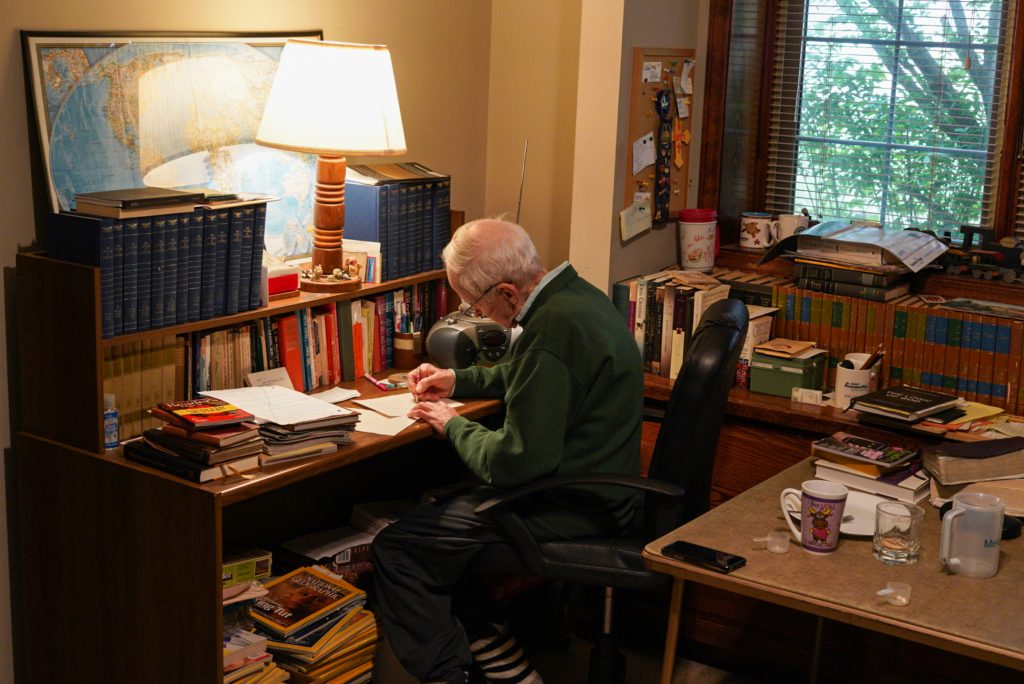
Their main source of staying up to date on what is going on in the world is through the media. My grandfather constantly has the TV on and if he isn’t watching it, he is listening to his radio. While he doesn’t understand much of what is going on, he knows the basics of what is happening locally. He spends a lot of his time writing in notebooks and on index cards, but he often will write letters to his friends and family. This is one letter he wrote to his sister who lives in Michigan.
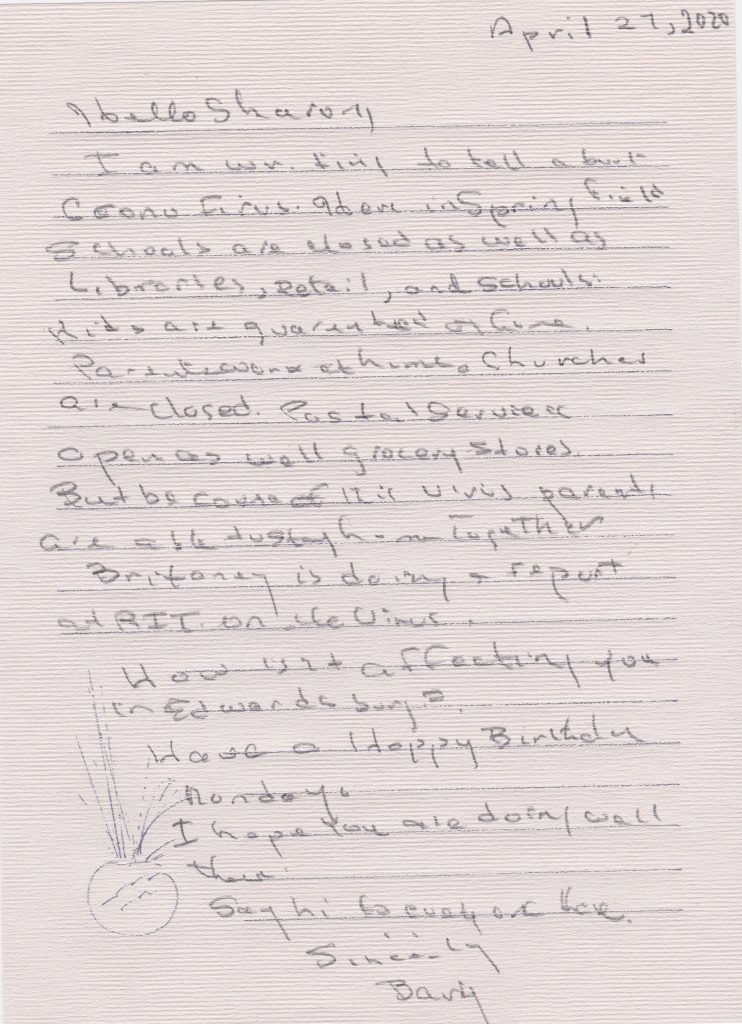
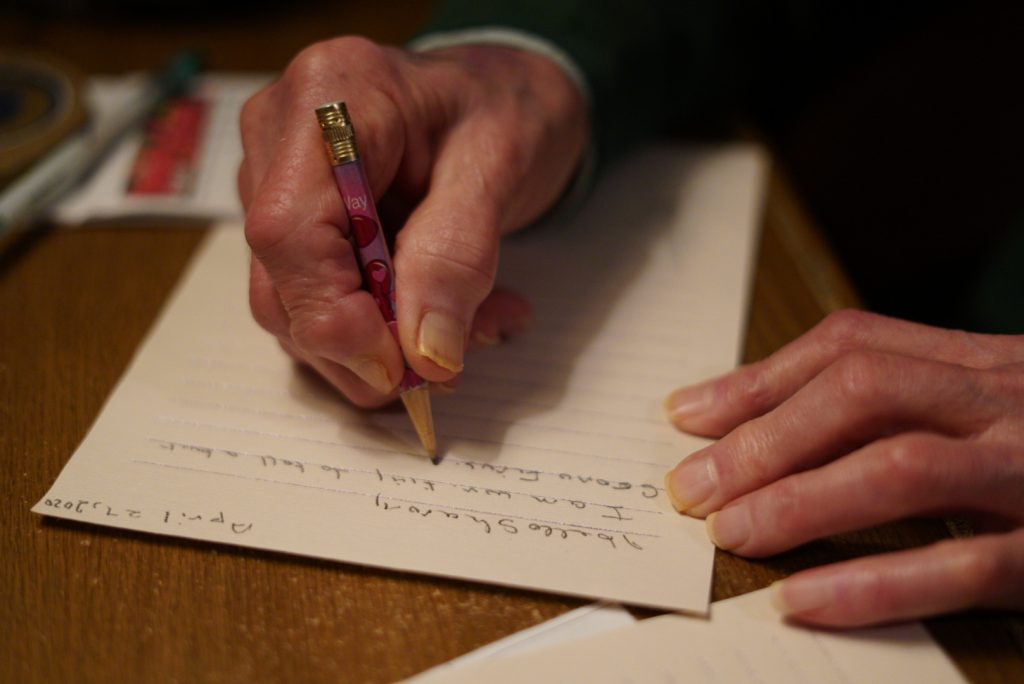
His dementia limits his ability to communicate through electronic devices, so writing letters is something that helps him process his thoughts and talk to those outside of the house. You can see that Barry’s letter is very similar to the letters sent to Niel Tice. Times change, and the illnesses are different, but these letters show us that there are parallels from our past to our present. We are having to adjust to the “new normal” but through these letters I’ve discovered that the normal is not so new after all.

